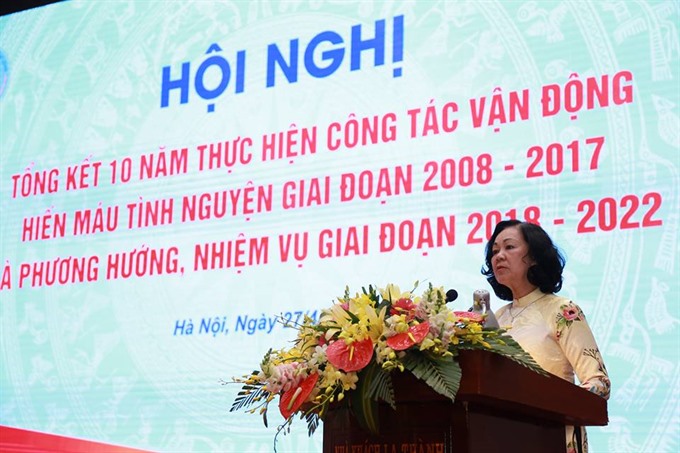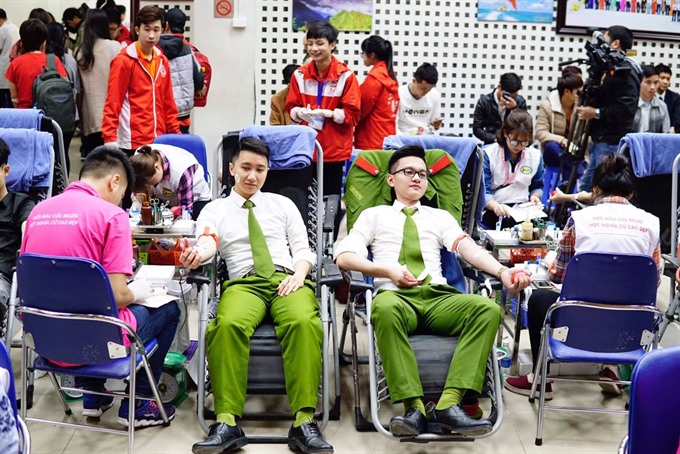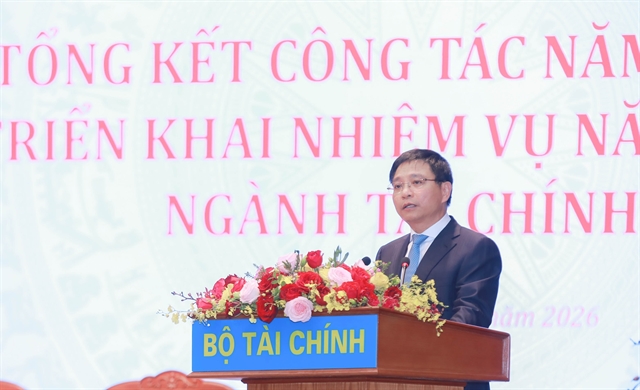 Society
Society

Việt Nam has set a goal to increase the blood donation rate in the country to cover at least two per cent of the population by 2022 through voluntary donors.
 |
| Politburo member and head of the Party Central Committee’s Commission for Mass Mobilisation, Trương Thị Mai speaks at a conference on April 27 to review 10 years of implementation of voluntary blood donation activities in Việt Nam.— Photo suckhoedoisong.vn |
HÀ NỘI — Việt Nam has set a goal to increase the blood donation rate in the country to cover at least two per cent of the population by 2022 through voluntary donors.
This was announced at a conference on April 27 to review 10 years of implementation of voluntary blood donation activities in Việt Nam.
In the next five years, the country will continue to strengthen community awareness on the benefits of voluntary blood donation and safe blood transfusion and will plan to increase the number of donors step by step to ensure blood supply for patients.
According to statistics of the health ministry, the health sector has collected more than 10,175,000 units of blood since the establishment of the National Steering Committee for Voluntary Blood Donation Mobilisation 10 years ago to meet the blood demand for patients’ treatment and emergency cases.
Attending the event, Politburo member and head of the Party Central Committee’s Commission for Mass Mobilisation, Trương Thị Mai, called on the health sector, Red Cross, volunteers and community to step up efforts to mobilise more people to donate blood and improve the safety and quality of blood transfusion.
Mai praised the contribution of the blood donation mobilisation movement, especially the National Steering Committee for Voluntary Blood Donation Mobilisation over the past 10 years. She, however, stressed the need to improve communication and renew blood donation forms.
 |
| Health Minister Nguyễn Thị Kim Tiến speaks at the event. — Photo suckhoedoisong.vn |
“There is a need to continuously strengthen the capacity of medical facilities for safe blood transfusion and expand a good model of effective blood donation mobilisation nationwide,” Mai said.
“I hope all State and private organisations, institutions and companies will participate in the voluntary blood donation movement and help save the lives of patients, contributing to the cause of public healthcare,” Mai added.
“The movement of voluntary blood donation has been promoted strongly nationwide with the involvement of ministries, sectors, provinces and cities in the form of various blood donation camps, such as Xuân Hồng (Red Spring), Hành trình đỏ (Red Journey) and Chủ nhật đỏ (Red Sunday),” said Health Minister Nguyễn Thị Kim Tiến at the event.
“Increasing the blood supply has basically met the country’s demand for emergency and treatment and has helped save the lives of thousands of patients,” Tiến said.
She said the country still faced many obstacles due to the increasing demand for blood, adding that information and communication on voluntary blood donation was not strong enough and that blood donors were mainly youths and students.
 |
| Students of the Police Security Academy donated blood at the Xuân Hồng (Red Spring) festival in Hà Nội on March 2018. — VNS Photo Thanh Hải |
Tiến further said the country lacked specialised staff for mobilising blood donation and that the capacity to preserve, produce and supply blood from blood centres to hospitals was limited.
Many localities face a shortage of blood during summer and Lunar New Year (Tết), Tiến said.
According to the health ministry, the country’s total collected volume of blood has increased three times to nearly 1.5 million units in 2017, compared to 500,000 units in 2008. Blood donation from voluntary donors contributed 98 per cent of the total collected blood in 2017, compared to 71.6 per cent in 2008.
The blood donation rate increased to cover nearly 1.6 per cent of the population in 2017, compared to 0.61 per cent in 2008. The haematology and blood transfusion medical system has been developed nationwide, while policies relating to blood donation and donors continue to be improved. Việt Nam currently has 3,363 blood donation clubs with 135,000 members, including clubs for rare blood groups and live blood banks, according to Tiến.— VNS




